Looking at what lies above the sky million light-years away is such an enjoyable experience. But to begin your astronomical journey, you’ve got to have a good telescope.
Shopping for telescopes is definitely not an easy task. First of all, these devices are not cheap so you definitely want to end up purchasing the one that’s worth the price. More than the things to consider (such as the lens, aperture, distance, cost, etc.), there is also a lot of information to digest especially if this is your first time actually buying one. For instance, you’ve got to know how telescopes work and what features to look for.
Thankfully, your search is going to be much easier this time. Why? Because we’ve already filtered the best telescopes for beginners that you can find on the market today. This collection of reviews is a product of in-depth research and careful comparison. Not only are these telescopes preferred by a majority of astronomy amateurs and enthusiasts like you, but they are also recommended by the experts for a number of reasons.
Top 8 Telescopes For Beginners Of 2020 Reviewed
1. Orion 09007 SpaceProbe 130ST Equatorial Reflector Telescope
 Powerful Telescope for Beginners
Powerful Telescope for Beginners
The Orion 09007 SpaceProbe 130ST is no doubt the best telescope for beginners who are looking for powerful features that are not complex to utilize. This telescope features a 130mm parabolic primary mirror that gives you a high-end view of the deep-sky objects like the brighter galaxies, nebulae, and star clusters. Meanwhile, the 5.1-inch aperture parabolic reflector gathers a good amount of light, allowing you to see the moon and other planets up close. Its optical tube is only 24-inch long. This makes it less of a hassle when you need to transport your device.
This telescope includes a sturdy mount and tripod that allows manual slow motion. This is very important because you can watch sky objects as they migrate across the night sky. The aluminum tripod has adjustable heights, so even your little one can take a look at those amazing objects up above. It even has an accessory tray where you can securely store your stargazing extras – flashlight, eyepieces, and more.
Pros:
- Easy to use
- Excellent magnification
- Great starter software
Cons:
- Expensive
2. Celestron NexStar 6 SE Telescope
 Backyard Telescope for Beginners
Backyard Telescope for Beginners
There’s no better place to set up the very user-friendly Celestron NexStar 6 SE Telescope than in your backyard where the whole family can get the best views of the cosmic world. Like Orion, Celestron has been making high-quality telescopes since the 1970s. They are actually among the first to build a compact, user-friendly compound telescope that is designed to bring the cosmic viewing adventure to backyards across America. This latest model was even beefed up with its high-tech star-tracking computer system.
It’s iconic “orange tube” is equipped with the latest features that both beginners and intermediate levels will find very useful. These include the 6-inch aperture which has an excellent light-gathering ability that makes viewing of the moon, stars, and planets, even the deep-sky objects like the Orion Nebula, incredibly possible. It also comes with a fully automated GoTo mount and a database of over 40,000 celestial objects. This makes locating and tracking cosmic objects so easy. Meanwhile, the SkyAlign technology lets you control your telescope from the attached keypad. Celestron NexStar 6 SE comes with a sturdy steel tripod that has detachable components for easy transportation.
Pros:
- Fully automated GoTo mount
- SkyAlign technology
- Compact design
Cons:
- The stand will likely wear out over time
3. Celestron PowerSeeker 50 AZ Refractor Telescope
 Refractor Telescope for Absolute Beginners
Refractor Telescope for Absolute Beginners
Who says you can’t get a good beginner telescope for less than $100? Featuring a combination of quality, value, and power, the Celestron PowerSeeker 50 AZ Refractor Telescope makes a perfect telescope for kids and beginners.
One of the most frequently purchased telescope online, the PowerSeeker 50AZ is a great gifting choice for children and adults who are very new to astronomical observations. It offers very basic features, such as erect image optics and a light aluminum tripod. Because it’s extremely easy to set up, kids and adults who have no experience using a telescope can use it right the first time. It also features slow motion controls for smooth tracking, fully coated glass optical components for clarity and brightness, and an accessory tray.
This telescope is equipped with Barlow lens that has magnifying power three times of each eyepiece. So even if the cosmic objects are moving, you can vividly watch them from where you are. But of course, compared with other Celestron telescopes, this one is unambiguously an entry-level tool. Most of its parts are made from plastic materials so if you want to make it last for years, great care is required. Nonetheless, it’s a perfect basic telescope which could spark your interest in pursuing astronomy as a hobby.
Pros:
- Cheap yet reliable
- Easy no-tool setup
- Bonus Astronomy Software download
Cons:
- Very basic tool
- Materials used are average-type
4. Meade Instruments 216001 Polaris 70 EQ Refractor Telescope
 Inexpensive Telescope for Beginners
Inexpensive Telescope for Beginners
Combining value and quality, the Meade Instruments 216001 Polaris 70 EQ is another good choice if you’re after an entry-level telescope for a very low price. Here’s another inexpensive telescope that won’t disappoint you. With an aperture of 70mm and focal length of 900mm, Meade gives you a good access to beautiful cosmic views. Its features include reliable light-gathering abilities, precise positioning, and better magnification.
Another interesting feature of Meade is the user-friendly equatorial mount that lets you easily track and locate celestial bodies through a red-dot viewfinder and astronomical software. And since it’s a refractor-type telescope, there’s no need to align mirrors to get to the right viewing setting. It’s all set and ready as you take it outside the box. But of course, it doesn’t let you view as many details seen from deep-sky objects using reflecting telescopes.
Meade has a right-side-up image, which means you can also use the telescope for daytime observing of birds, ocean, and so on.
Pros:
- Can be used for daytime observations
- Equatorial mount
Cons:
- Does not produce a much detailed image of deep-sky objects
5. BARSKA Starwatcher 400x70mm Refractor Telescope
 Learning Telescope for Beginners
Learning Telescope for Beginners
BARSKA telescopes are well-known for their quality. If you’re looking for an affordable learning telescope that introduces you to astronomy and will prepare you for a deeper level of exploration in the near future, you can never go wrong with BARSKA Starwatcher 400x70mm Refractor Telescope.
This entry-level telescope features a 400 mm focal length and 300x power, making it extensively suitable for all types of interplanetary viewing. It feels quite solid too, with no issues about wobbles or handling. It features a coated glass optics that enhance image brightness, interchangeable eyepieces, and an adjustable tripod and soft carrying case. The set comes with a beginner’s version of the Deepsky Astronomy Software which features a database of over 10,000 objects, including star clusters, double stars, variable stars, and nebulae. Moreover, the eyepieces make use of 3x power Barlow lens.
The BARSKA telescope is ideal for students, children, and adults who are just starting their quest to studying astronomy. It’s durable and budget-friendly, and most of all, it’s easy to use. It comes with a tripod too which is more suitable for flat, smooth surfaces rather in rough terrains. There’s also a soft carrying case for transporting.
Pros:
- Durable
- Very easy to use
Cons:
- The table-top tripod not suitable for other surfaces like fields
- Eyepieces not so good
6. Celestron 21035 70mm Travel Scope
 Travel Telescope for Beginners
Travel Telescope for Beginners
Designed for astronomy enthusiasts who love to travel, the Celestron 21035 70mm Travel Scope is lightweight, easy to set up, and user-friendly. Celestron travel scope features a 70mm aperture, 400mm focal length, 20mm eyepiece, and 20x magnification power. It’s very basic but it’s great for viewing stars and other celestial objects and is so convenient to bring anywhere. The optical lens is fully coated, resultininto a clear, crisp and bright image.
The telescope also comes with additional features and accessories that are well-suited for travel. These are the alt azimuth mount that lets you easily track celestial objects, a preassembled tripod, and a Sky X software that features a database of 10,000 objects. Even more, it comes with its own backpack that is large enough to fit all its parts and accessories, from the eyepieces to the tripod.
Celestron travel scope can be used for terrestrial viewing too. Weighing only about 1.5kg, you can take it away with you for a weekend out-of-town trip or even a vacation abroad. The product comes with a two-year warranty, which is pretty impressive considering its very cheap price. The biggest drawback of this scope is the tripod, which according to many users, wears out easily. It’s a table-top style tripod which means you may find it inconvenient to set up on an uneven surface.
Pros:
- Fully-coated glass optics
- Comes with a custom backpack
- Portable
Cons:
- Tripod is unstable and average-type
7. Celestron Inspire 100AZ Refractor Telescope
 Telescope for Capturing Photos
Telescope for Capturing Photos
Equipped with an integrated smartphone adapter, the Celestron Inspire 100AZ Refractor lets you instantly snap and upload photos of the great universe from your phone.
This telescope has amazing features that are not available in other entry-level telescopes. First, it has the largest opening among the Celestron series of beginner’s telescopes. Second, it has a built-in LED red flashlight that lights up the accessory tray and can even be removed so you can use it for any other purpose. The third unique feature of this scope is the integrated smartphone adapter that allows you to capture high-power images of the deep sky objects. All you need to do is place your phone against the rubberized surface on the outside of the cap so your camera is able to get photos using the telescope’s imaging port. But, if you want to look in the telescope to view the image, there’s a fitting in the lens that secures your eyepiece.
This unit features a fully coated glass optics for better capturing of light, a sturdy steel tripod that has a foldable design, and a short tube that allows a wider field of view.
Pros:
- Easy setup
- Smartphone adapter built-in
- Focus micrometer
Cons:
- Magnification is not so impressive
8. SkyWatcher S11620 Traditional Dobsonian 10-Inch
 Telescope for Skywatching
Telescope for Skywatching
Beautiful in white – this stunning telescope provides portability, along with versatile features that make skywatching fun.
This 10-Inch Dobsonian-style Newtonian telescope features 1,200 mm focal length, 2-inch single-speed Crayford-style focuser, and a rock-solid mount with tension clutch for altitude. Designed for beginners, the scope is easy to use and handle too. Furthermore, the 10-inch aperture makes it a powerful tool for its price.
This is the largest among the SkyWatcher scopes by Celestron, weighing 66 pounds. While you can take it away with you on your next vacation, it’s a little inconvenient to carry around and has a bulky structure.
Pros:
- Reasonably priced
- Comes with additional accessories
Cons:
- Bulky
How To Choose the Best Telescope For Beginners: The Ultimate Buying Guide
Telescopes can provide so much fun and learning. But many people end up buying the wrong one. Some rush out to buy cheap telescopes that don’t give justice to the cosmos, while others buy very expensive telescopes which they don’t need. If you want to ensure that you’re buying something that’s worth the price and investment, follow this guide.
Types of Telescopes for Beginners
There are actually three kinds of telescopes: refractor, reflector, and compound. However, for this buying guide, we are going to focus on just the first two, as the third type is intended for advanced users.
Refractor Telescopes
When shopping around for the best telescopes for beginners, you may have come across refractor-types several times. They are usually the least expensive type of scopes, featuring a simple design and just the basic features. Refractor scopes make use of the lens as its objective to form an image. However, they tend to be heavier and bulkier than the other types. They also don’t produce as much detail as reflector scopes.
Choose a refractor telescope if you want:
- A beginner telescope that needs little to no maintenance
- To view objects on earth (e.g. birds)
- An inexpensive telescope
Reflector Telescopes
This type of telescope makes use of curved mirrors that reflect light to form an image. This results in a brighter image and higher magnification. Reflector telescopes produce a very high quality of images. They are also compact and lightweight. Nonetheless, they require some maintenance as the open tube can collect dust and lead to damage over time. Reflector scopes don’t work for earth objects. They are also more expensive than refractor scopes.
Choose a reflector telescope if you want:
- View faint, deep sky objects
- To produce high-quality images
- The best value for your money
Things to Look For
There are four important things you should look for when buying a telescope. These are the aperture, magnification, focal length, and computer control.
Aperture
In almost every review of the best telescopes for beginners you’ve seen above, there’s always a mention of ‘aperture’. Being the single most important factor that determines how much you can see using the telescope, you should pay attention to this thing. In general, the bigger the aperture, the more light it gathers and the more quality views you will have. A big aperture lets you see fainter, deep-sky objects. Basically, the problem with most astronomical objects is not that they are too small, but they are actually too faint and need more light.
Magnification
Aperture is often linked to magnification. However, the latter doesn’t have anything to do with light gathering. The magnification power of a telescope is determined by the focal length and eyepiece. You can actually make any telescope provide powerful magnifications just by changing your eyepiece but if your scope doesn’t have a big enough aperture, it’s worthless.
You will need 50x magnification to clearly view the nebulae, Jupiter’s moons, Saturn’s rings, star clusters, and galaxies. But to vividly identify Martian surface features or the members of the tight double star, you will need 150x or more.
Focal Length
This refers to the distance between the focal point of your scope and the lens or mirror. While it isn’t as important as the aperture, the longer the focal length, the bigger things will look. When shopping for the best telescopes for beginners, choose the one which has a big aperture and long focal length.
Computer Control
Modern telescopes feature a built-in computer control which helps you locate and track interesting objects. The best telescopes for beginners include a software featuring a database of thousands of celestial bodies.
Telescope Accessories
The best telescopes come with a few very important accessories.
Eyepieces
For you to clearly view the image, you have to get quality eyepieces. They serve as little magnifying glasses. Thus, changing the eyepieces lets you view objects in varying magnifications. Generally, telescopes come supplied with one or two eyepieces. You can always buy additional eyepieces as you get more familiar with using your entry-level telescope. This tool ranges from $40 to $250. Ideally, you want a set that has multi-element designs which give you a very wide field of view.
Some telescopes come with a Barlow lens. It’s a great feature to have as it multiplies each eyepiece power by two or three times, thus intensifying its magnification.
Finders
If you’re after really interesting deep-sky objects, the telescope you’re buying should have some sort of finder. Entry-level scopes make use of different types of finders. Some are low-power that involve no optics rather wide-field scopes that allow simple viewing. Others feature a “reflex” sight wherein a glowing ‘red dot’ automatically tracks a desired star or planet. More advanced scopes make use of a real finderscope – an aiming device that serves as a small auxiliary telescope.
Telescope Mounts
The mount is another major component of a telescope. It comes in two basic types: the equatorial mount and the altazimuth mount.
Equatorial mount – this mount moves in directions of celestial north-south and east-west. Using this kind of mount, you can track celestial targets as the earth turns by simply moving the scope around through this single axis. Some equatorial mounts have a motor tracking which is especially useful for magnification viewing. Using this mount, you get more control of your telescope. However, it may take a little longer to set it up due to the alignment process.
Altazimuth mount – this mount moves up-down (in altitude) and right-left (azimuth), much similar to a photo tripod. You will need to adjust both of these directions depending on your viewing needs. It’s generally lighter than an equatorial mount. Furthermore, the simplicity of this mount makes it ideal for beginners. The altazimuth mount is also capable of holding larger telescopes.
Budget
Astronomy is such a fun and enjoyable habit. But it can be expensive too. There are units that are under $100 which are best for kids and budding astronomers. You shouldn’t expect much from these scopes though and you may get bored easily as they have the most basic features. Majority of telescopes for beginners range from $300 to $800. These models will have you enjoying great views of the night sky and exploring the amazing celestial bodies above the sky for quite a while.
It is important to determine how you would want to use your telescope and what objects are you looking to see. If you travel often, consider a more portable-type of a telescope. And if you’re really serious about your astronomical adventure, it could be worth checking out the telescopes with advanced features.
Conclusion
At this point, you are already equipped with the information you need to be able to choose the best telescope for beginners. Remember that the best ones tend to have bigger apertures, longer focal lengths, and an overall mechanism that is simple to use. As a beginner in the world of astronomy, you want a scope that will make you more interested to explore the universe, from the moon and stars to the other galaxies up above. Even if you’re choosing a less expensive telescope, it should still provide you a decent view of the deep-sky objects.


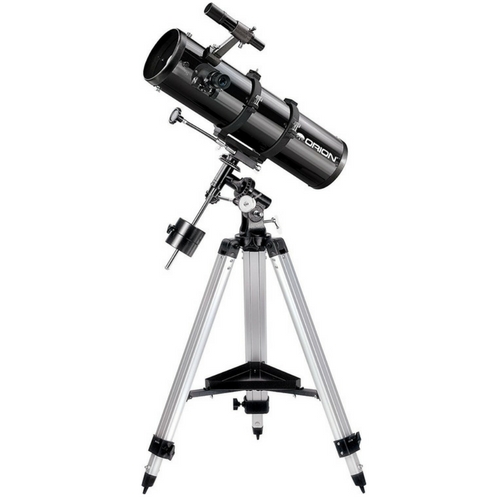
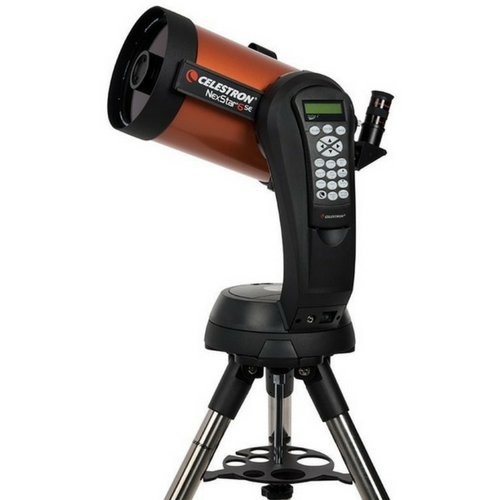
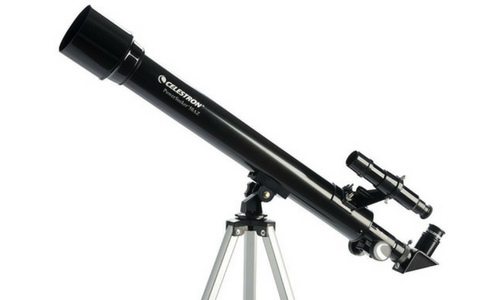
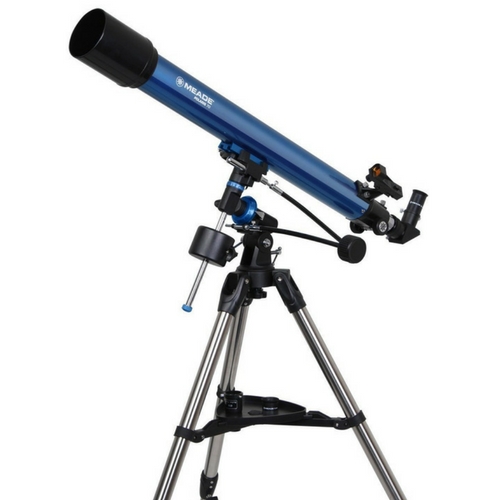
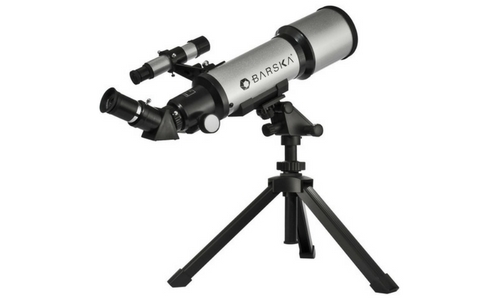
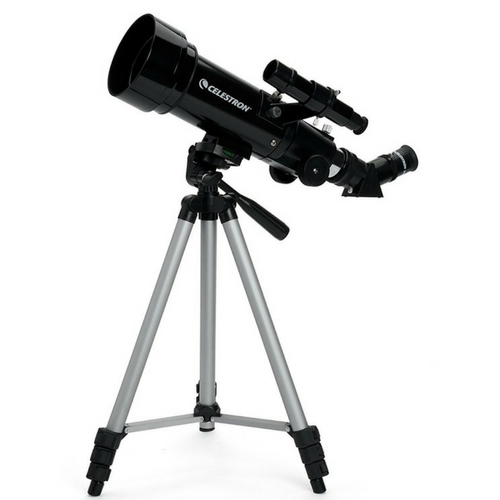
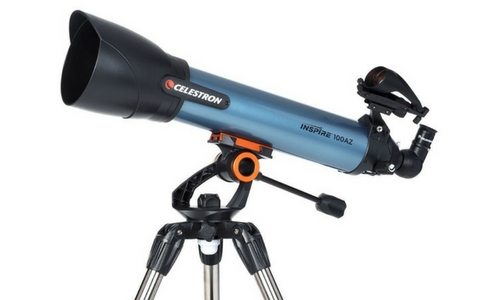
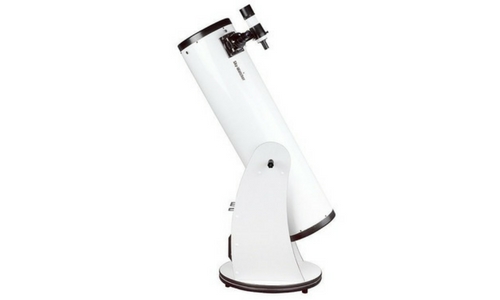


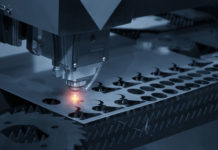








![Best Crochet Hooks for Beginners and Pros [2020 Update] best crochet books](https://www.awebtoknow.com/wp-content/uploads/2018/01/best-crochet-books-100x70.jpg)


